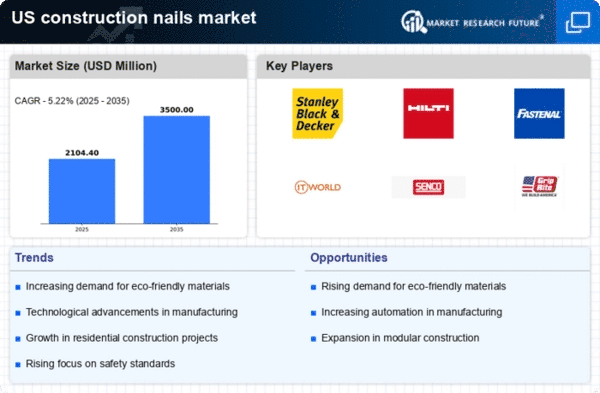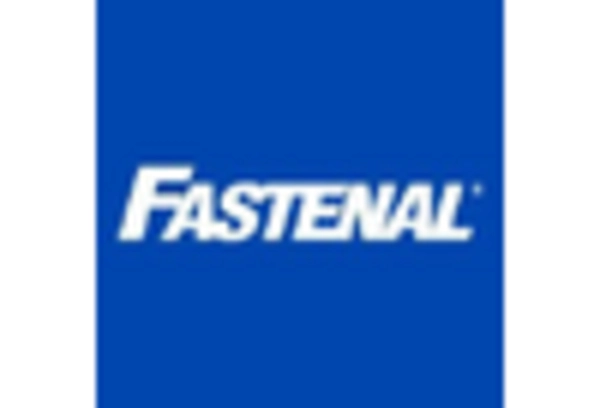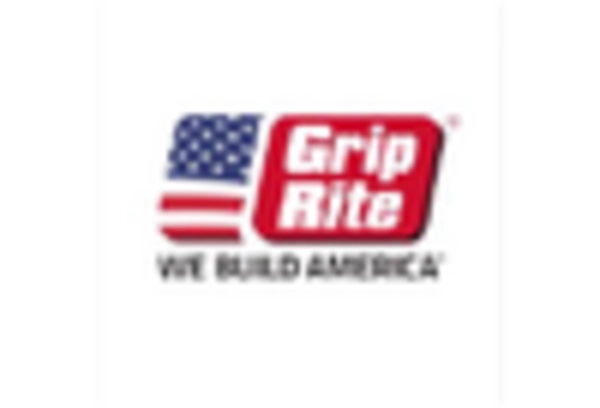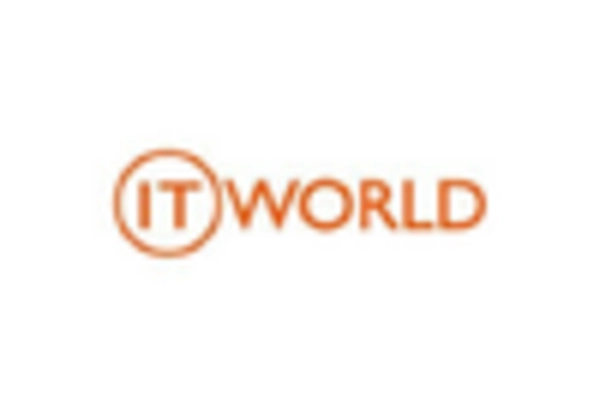Increased DIY Projects
The construction nails market is witnessing a surge in demand due to the rising trend of do-it-yourself (DIY) projects among homeowners. As more individuals engage in home improvement and renovation activities, the need for construction nails has escalated. According to recent surveys, approximately 60% of homeowners in the US have undertaken at least one DIY project in the past year, which often requires various types of nails for assembly and fastening. This trend not only boosts sales for retail suppliers but also encourages manufacturers to diversify their product offerings to cater to the DIY segment. Consequently, the construction nails market is likely to benefit from this growing consumer interest in home projects.
Rising Construction Activities
The construction nails market experiences a notable boost due to the increasing number of construction projects across the United States. With the construction sector projected to grow at a CAGR of approximately 5% from 2025 to 2030, the demand for construction nails is expected to rise correspondingly. This growth is driven by both residential and commercial construction activities, as well as infrastructure development initiatives. As new housing developments and commercial spaces emerge, the need for reliable fastening solutions becomes paramount. Consequently, manufacturers in the construction nails market are likely to see heightened demand for their products, which may lead to innovations in nail design and materials to meet the evolving needs of builders and contractors.
Regulatory Standards and Compliance
The construction nails market is significantly influenced by regulatory standards and compliance requirements in the United States. Various building codes and safety regulations necessitate the use of specific types of nails for different applications, ensuring structural integrity and safety. For instance, the International Building Code (IBC) outlines standards that directly impact the types of materials used in construction, including nails. As these regulations evolve, manufacturers must adapt their products to meet compliance, which may drive innovation and quality improvements in the construction nails market. This adherence to standards not only enhances safety but also fosters consumer confidence in the products used in construction projects.
Sustainability Initiatives in Construction
The construction nails market is increasingly influenced by sustainability initiatives within the construction industry. As builders and contractors prioritize eco-friendly practices, there is a growing demand for nails made from sustainable materials or those that minimize environmental impact. This shift is reflected in the rising popularity of recycled steel nails and products that adhere to green building standards. According to industry reports, approximately 30% of construction projects in the US now incorporate sustainable materials, which is likely to drive demand for environmentally friendly construction nails. Manufacturers that align their product offerings with these sustainability trends may find new opportunities for growth in the construction nails market.
Technological Innovations in Manufacturing
Technological advancements in manufacturing processes are reshaping the construction nails market. Innovations such as automated production lines and advanced materials are enhancing the efficiency and quality of nail production. For instance, the introduction of high-strength steel and corrosion-resistant coatings has improved the durability and performance of nails, making them more appealing to builders and contractors. Furthermore, the integration of smart manufacturing technologies allows for better quality control and reduced production costs. As these technologies continue to evolve, they are expected to drive competition within the construction nails market, leading to a wider range of products that meet the specific needs of various construction applications.

















Leave a Comment